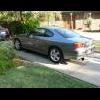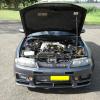I am so farkin pissed off!!!!!!!!
Announcements
-
Similar Content
-
Latest Posts
-
It's the adhesive holding the ceramic wheel to the shaft the fails on 90% of them.
-
By joshuaho96 · Posted
Foreign debris, physical shock, boost leak, could be anything honestly. The danger in taking all the timing out of a tune/hitting the R&R corner is that even if the engine doesn't detonate your turbo is taking a lot of abuse from high EGT. Also, even if nothing goes wrong it is a journal bearing that is spinning at 100k RPM on boost. Eventually it goes through enough cold start/pressure cycles to wear it out. -
I kinda accidentally saw this, and was interested, but It actually seems to replaces the whole center computer, using the existing screen and buttons. AND it may only be for a G37 and not compatible with a Japanese 370. So its not for me, but someone else may be interested to look into it. Its about $680USD. If I am understanding it right, it basically replaces/installs and android pc that integrates with the existing screen. But I could be wrong. https://gromaudio.com/vline/ The video I first saw was the following, with very little and unclear details. Even if your not interested in the system, the video on their site was pretty comforting in showing how simple the whole centre comes out
-
hfygrte52 what side you looking for? Do you care what color car it's off? Found a white LH side on here: https://skylinespares.com.au/product/nissan-skyline-r33-coupe-rear-tail-light/ Aussie parts place but will ship to USA. Maybe get it before there's a tarrif on 25yo shit box parts
-
I’m with Shannon’s for all 5 of our cars. Agreed values seem fair, premium price is okay. ($210 ish a month, all comprehensive). Have claimed once with them for a not at fault claim with another car where my car had no damage. Was one call after the incident and an email after. Deemed not at fault so premium didn’t go up either. I have called up and spoken with people who are not familiar with certain cars and didn’t agree with me on value or let their personal vehicle preferences effect the call. But called back later and got someone else who was more agreeable.
-






Recommended Posts
Create an account or sign in to comment
You need to be a member in order to leave a comment
Create an account
Sign up for a new account in our community. It's easy!
Register a new accountSign in
Already have an account? Sign in here.
Sign In Now